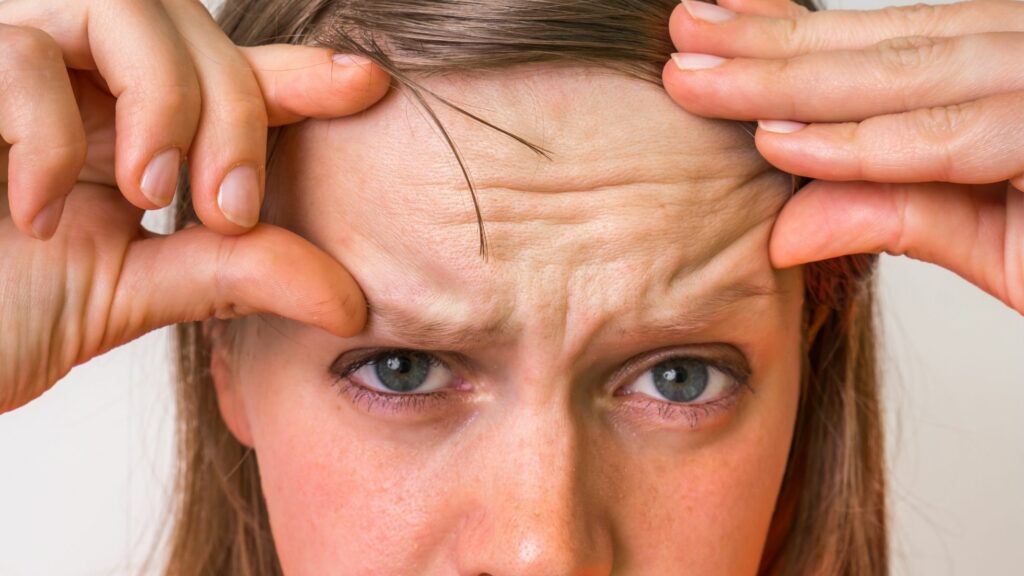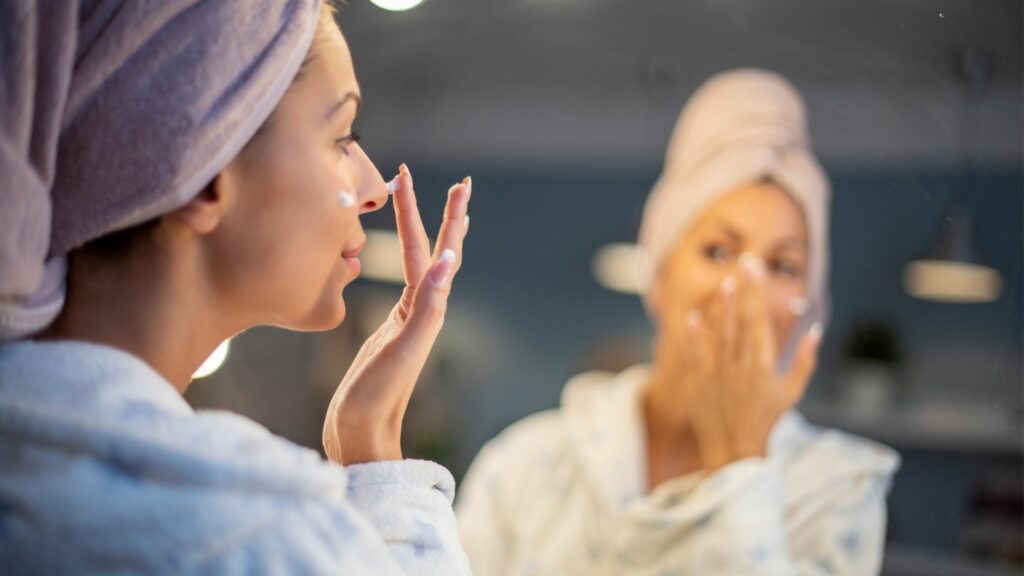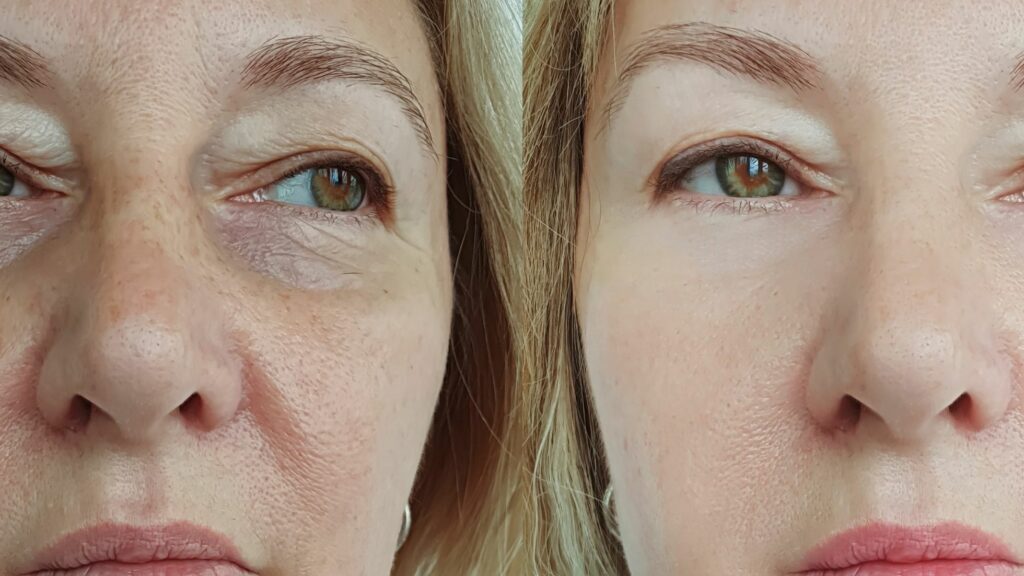
How to Integrate Tretinoin Into Your Korean Skincare Routine
This post may contain affiliate links, meaning we may receive a small commission at no cost for you, if you purchase through these links.
Integrating Tretinoin into your skincare routine can seem daunting, especially when you’re devoted to the multi-step Korean skincare method known for its focus on hydration and gentle care. When I’ve started using Tretinoin, I read so many horror stories that I almost gave up: in truth, if you know how to integrate it and how to prevent discomfort, using K-beauty, you are in for a treat.
Tretinoin, a powerful derivative of Vitamin A, offers transformative benefits for the skin, including reducing signs of aging, improving texture, and combating acne. However, its potency also means it must be introduced and used cautiously even if you are already using retinol.
This article guides you through seamlessly incorporating Tretinoin into your Korean skincare routine, ensuring you reap the benefits without overwhelming your skin.
Understanding Tretinoin

Tretinoin is more than just a topical treatment; it’s a game-changer in dermatology. Known for its retinoid family ties, Tretinoin accelerates cell turnover, unveiling fresher, more youthful skin beneath. Its prowess in collagen production and pigmentation reduction makes it a coveted ingredient for those chasing the fountain of youth.
Yet, it’s not without its challenges. Side effects like dryness, redness, and sensitivity are common, highlighting the need for a thoughtful approach to its integration into your skincare regime. That’s where Korean skincare comes into play: its emphases on gentleness, layering products, and maintaining hydration can help using Tretinoin correctly while minimizing its side effects.
Incorporating Tretinoin into Routine

Incorporating Tretinoin into your Korean skincare routine is a process that demands attentiveness and precision to harness its full potential while minimizing adverse effects. This powerful retinoid, celebrated for its profound impact on skin renewal and collagen production, must be introduced with a strategy that respects both its potency and your skin’s threshold.
Application Timing and Method
Tretinoin is most effective when integrated into the nighttime skincare regimen. Its photosensitive nature means it degrades and becomes less effective when exposed to sunlight, thus applying it after sunset maximizes its benefits.
Start with a gentle cleanser to remove impurities without stripping the skin’s natural oils, maintaining a balanced canvas for Tretinoin application. Make sure you don’t use a cleanser with salicylic acid, as it can irritate your skin in conjunction with Tretinoin. Cosrx Low PH Good Morning Gel Cleanser is an excellent choice.
I prefer not using anything else after the cleanser to allow the Tretinoin to work directly on the skin but if you want, you can add a hydrating toner to restore the skin’s pH balance and create an optimal environment for skin repair and health.
At this stage, your skin should be dry to touch, as damp skin can enhance absorption too quickly, leading to irritation.
A pea-sized amount of Tretinoin is sufficient for the entire face. Dispense it on your fingertip and dot it on your forehead, cheeks, and chin before gently blending. This method ensures even distribution without concentrating the product too heavily in any area.
Key to its application is avoiding the orbital area around the eyes and the corners of the mouth and nose, as the skin here is thinner and more prone to irritation.
Frequency and Dosage Adjustment
Initiate your Tretinoin journey with a low frequency—about two to three weekly applications. This cautious start allows your skin to gradually acclimate to the retinoid without overwhelming it. Pay close attention to how your skin responds in the days following application.
Dryness, slight redness, and peeling are common as your skin adjusts; however, these should not escalate to severe irritation or discomfort.
Understanding and Managing the Purge
A pivotal aspect of Tretinoin use is navigating the “purging phase.” As Tretinoin accelerates cell turnover, it can initially exacerbate acne and bring latent impurities to the surface. This purge is not an adverse reaction but a temporary adjustment period lasting anywhere from four to six weeks.
During this phase, it’s crucial to maintain a supportive skincare routine that emphasizes hydration and barrier repair. Incorporating hydrating essences, serums, and ceramide-rich moisturizers can provide solace to stressed skin, helping mitigate the intensity of the purge.
Adjusting the frequency of Tretinoin application based on your skin’s tolerance is paramount. If irritation becomes pronounced or if the purging phase is particularly challenging, reducing the frequency of application or using a buffering technique—mixing Tretinoin with your moisturizer to dilute its strength—can offer relief.
Over time, as your skin builds resilience, you may gradually increase the frequency of use, leading to the desired outcomes of smoother, clearer, and more youthful-looking skin.
Post-Tretinoin Care

Post-Tretinoin care is an essential step in your skincare routine, pivotal in ensuring that the skin reaps the benefits of Tretinoin while minimizing potential side effects such as dryness and irritation. Given Tretinoin’s potency in promoting cell turnover, it significantly alters the skin’s moisture barrier, making the subsequent steps critical for maintaining skin health and comfort.
Improving Moisturization
After the Tretinoin application, elevating your moisturization game is not just beneficial—it’s necessary. Seek out a high-quality, deeply nourishing moisturizer that goes beyond surface-level hydration.
The objective is to replenish the skin’s natural lipids, enhance its barrier function, and provide a protective layer against environmental stressors. Ingredients like ceramides mimic the skin’s natural moisturizing factors, effectively sealing in moisture and repairing the skin barrier.
Hyaluronic acid, a humectant, draws water into the skin, plumping it up and reducing the appearance of fine lines; using a hyaluronic acid serum helps in reducing the effects of Tretinoin on your skin. Niacinamide, meanwhile, works to soothe inflammation, reduce redness, and improve the skin’s elasticity.
Advanced Hydration Techniques
Incorporating a sleeping mask into your post-Tretinoin care regimen can significantly boost skin recovery. Sleeping masks are designed to create a permeable seal on top of your skin, locking in the actives and moisture applied during your nighttime routine. This ensures that the skin is in an optimal state for regeneration overnight.
Opt for formulas enriched with aloe vera, snail mucin, or Centella Asiatica—ingredients renowned for their soothing and healing properties. Using a sleeping mask once or twice a week can help mitigate the peeling and dryness often associated with Tretinoin, leading to a more comfortable and effective adaptation period.
Layering for Enhanced Recovery
Consider adopting a layering approach to hydration if you experience severe dryness or peeling. Start with a hydrating toner or essence immediately after cleansing, followed by a serum that targets your specific skin concerns, such as a hyaluronic acid serum for hydration or a peptide serum for repair and anti-aging. Each layer should be allowed to absorb fully before applying the next, culminating in a rich moisturizer to lock in the benefits of each product. This method amplifies the moisturizing effect and ensures that the skin receives a diverse range of nutrients and reparative ingredients.
Addressing Specific Concerns
Incorporating products with calming and restorative ingredients can be a game-changer if you experience significant irritation from Tretinoin. Look for products containing bisabolol, allantoin, or green tea extract—known for their anti-inflammatory and soothing properties. These can help to calm irritated skin, reduce redness, and support the skin’s healing process.
Sun Protection and Tretinoin
Sun protection is non-negotiable when using Tretinoin. Its propensity to increase skin sensitivity means that broad-spectrum sunscreen of at least SPF 30 is essential during the day, even if you’re indoors or it’s cloudy. Reapply every two hours if you’re outdoors for prolonged periods. Opt for physical sunscreens with zinc oxide or titanium dioxide if your skin is particularly sensitive post-Tretinoin application.
Troubleshooting Common Issues

Even with meticulous preparations and adherence to recommended protocols, it’s common to encounter issues such as dryness, flaking, or irritation when using Tretinoin. These side effects, while manageable, signal the need for a tailored approach to your Tretinoin regimen.
Modulating Tretinoin Frequency
One of the first strategies to consider when facing adverse reactions is to adjust the frequency of your Tretinoin application. If you’re experiencing pronounced dryness or irritation, it might be beneficial to scale back to using Tretinoin every other night or even less frequently, depending on your skin’s tolerance.
I‘ve started applying it 3 nights a week and then gradually increased it. I had minor discomfort at the beginning, because of this cautionary approach.
This reduction allows your skin more time to recover between applications, mitigating the intensity of side effects while still benefiting from the treatment.
The Technique of Buffering
Buffering, or diluting Tretinoin with a moisturizer before application, serves as an effective method to lessen the impact of irritation. This technique involves mixing a pea-sized amount of Tretinoin with your moisturizer in your hand and then applying the mixture to your face. Buffering can significantly reduce the direct intensity of Tretinoin on the skin, making the treatment more tolerable, especially for those with sensitive skin types.
It’s essential to remember that integrating Tretinoin into your skincare routine is a long-term commitment, often described as a marathon, not a sprint. The transformative benefits of Tretinoin, including improved skin texture, reduced signs of aging, and clearer complexion, unfold over time.
Patience and persistence are crucial virtues in this journey. Adverse effects are typically temporary and indicative of the skin’s adjustment phase. With careful management and adjustments, most individuals can continue Tretinoin use and witness its profound benefits on skin health and appearance.
Advanced Tips for Enhanced Results

As you become more accustomed to Tretinoin’s effects and proficient in managing its integration, you may further seek ways to amplify its benefits. Here, advanced strategies and a nuanced understanding of skincare chemistry come into play, offering pathways to even more remarkable results.
Synergizing with Other Actives
Once your skin has comfortably adapted to Tretinoin, introducing complementary actives can synergistically enhance the skin’s appearance and health. When applied in the morning, vitamin C, a potent antioxidant, can work in tandem with Tretinoin to double down on anti-aging benefits, providing photoprotection and aiding in collagen synthesis.
However, the introduction of additional actives should be approached with caution. Begin with a low concentration of Vitamin C and monitor your skin’s response closely, allowing it time to adjust before potentially increasing the potency or adding other actives.
Seasonal Adjustments for Optimal Skin Health
Your skin’s needs fluctuate with the changing seasons, necessitating adjustments to your skincare routine.
During the colder months, focus on enhanced hydration and barrier repair. Layering hydrating serums under richer moisturizers can prevent the dryness and irritation exacerbated by cold, harsh weather.
Conversely, as temperatures rise in the summer, simplifying your routine to include lighter, water-based products can prevent congestion while supporting the skin’s needs in a humid environment.
Personalized Protocols with Professional Oversight
While general guidelines provide a foundation, skincare is deeply personal, and what works for one may not suit another. This is particularly true when incorporating powerful actives like Tretinoin and Vitamin C.
A dermatological consultation becomes invaluable, offering tailored advice that considers your skin’s unique characteristics, concerns, and goals. A dermatologist can guide product application’s timing, concentration, and sequencing to optimize your routine’s effectiveness and safety.
Conclusion
Embarking on a skincare journey with Tretinoin as a cornerstone requires patience, diligence, and a keen understanding of the ingredient’s potential and your skin’s unique needs. This journey is not just about incorporating a powerful retinoid into your routine; it’s about holistically nurturing your skin, respecting its limits, and fostering its resilience over time. Through careful integration, mindful application, and responsive care, Tretinoin can unlock unparalleled benefits, revealing a complexion that is not only clearer and more youthful but also more robust and balanced.
Remember, the essence of effective skincare lies in personalization. Listening to your skin’s feedback becomes paramount as you adapt your routine to include Tretinoin. Each adjustment, from product selection to application frequency, should be guided by your skin’s reactions and comfort level. Embracing a flexible approach—whether it involves buffering techniques, seasonal modifications, or integrating complementary actives—ensures your skincare regimen remains both effective and sustainable.
Tretinoin is a powerful ally in seeking optimal skin health, offering transformative benefits beyond surface-level improvements. By navigating its incorporation with care, embracing adaptability in your routine, and seeking personalized advice, you chart a path toward not just better skin, but also a deeper understanding and appreciation of its needs.
Tretinoin FAQs
What is Tretinoin, and how does it benefit the skin?
Tretinoin is a prescription-strength retinoid derived from Vitamin A. It promotes cell turnover, enhances collagen production, and reduces the appearance of fine lines, wrinkles, and acne. Its benefits include improved skin texture and tone and an overall reduction in signs of aging and blemishes.
How should Tretinoin be used in a skincare routine?
Tretinoin should be applied to clean, dry skin at night, as it is sensitive to sunlight. Start with a pea-sized amount for the entire face, avoiding the eye and mouth areas. Begin with applications 2-3 times a week, gradually increasing as your skin adjusts, and always follow with a moisturizer to combat potential dryness.
Can Tretinoin be used with other skincare products?
Yes, but with caution. Tretinoin can be combined with other skincare products like moisturizers and sunscreens, which are essential. However, it should not be used simultaneously with products containing benzoyl peroxide, salicylic acid, or other retinoids to avoid irritation. Always wait for Tretinoin to fully absorb before applying other products.
Where can I buy Tretinoin?
Tretinoin is available by prescription only in many countries due to its potent nature. You’ll need to consult a dermatologist or healthcare provider who can evaluate your skin and prescribe the appropriate strength. It’s not available over the counter like other retinol-based products.
What are the common side effects of Tretinoin, and how can they be managed?
Common side effects include redness, dryness, peeling, and increased sensitivity. These can be managed by gradually introducing Tretinoin into your routine, moisturizing regularly, and using sunscreen daily. If severe irritation occurs, consult your healthcare provider for advice.
How long does it take to see results from Tretinoin?
While some may notice improvements in as little as 4-6 weeks, significant results, especially for anti-aging benefits, may take 3-6 months of consistent use. Patience and consistency are key, as skin cell turnover and collagen production take time.
Can Tretinoin cause purging?
Yes, Tretinoin can cause an initial “purge” where acne may temporarily worsen as the skin adjusts and expels clogged pores. This phase typically lasts a few weeks and should gradually improve as your skin becomes accustomed to the treatment.
Is Tretinoin suitable for all skin types?
Tretinoin benefits most skin types, particularly for aging or acne-prone skin. However, those with extremely sensitive skin or certain skin conditions may experience irritation. A consultation with a dermatologist is recommended to determine if Tretinoin suits your skin type and concerns.
How does Tretinoin compare to over-the-counter retinols?
Tretinoin is more potent than over-the-counter retinol and provides quicker, more pronounced results. While OTC retinol can offer similar benefits over time, Tretinoin is clinically proven to treat acne and signs of aging more effectively due to its higher concentration and direct action on the skin.
Can I use Tretinoin while pregnant or breastfeeding?
Tretinoin is not recommended for use during pregnancy or while breastfeeding due to potential risks. It’s important to discuss alternative skincare options with your healthcare provider during these times.







